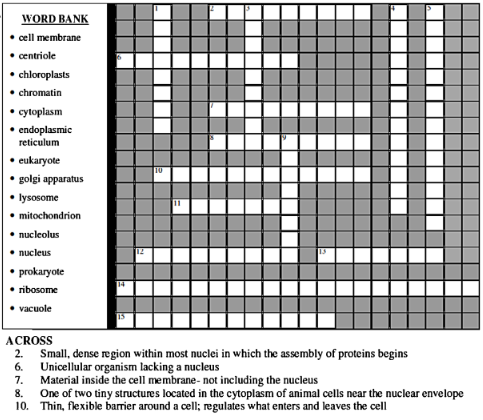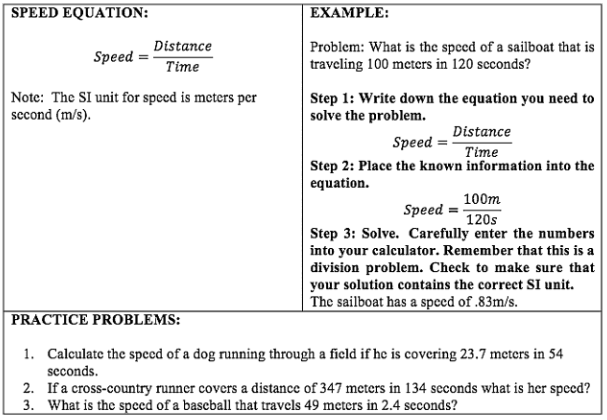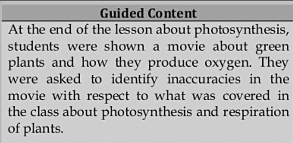By Sarah Hampton
With all the benefits of collaboration I’ve shared with you in the past two posts, should we drop direct instruction altogether and completely restructure our classrooms around collaboration? As it turns out, there are better times to collaborate than others, so don’t throw away your podium just yet. Even proponents of collaborative learning have said “We do not see any reason to develop pedagogical methods which exclusively rely on group activities. Individual reflection is required in order to transform experience into learning and class-wide activities are especially valuable when it comes to structuring the informal knowledge that [previously] emerged.” (from The Mechanics of Computer-Supported Collaborative Learning Macroscripts.) So when should we design collaborative activities for our classrooms?
Have you ever been asked to collaborate on a task that was so simple that figuring out how to involve another person took more work than just doing it yourself? Collaboration is a very powerful activity, but it works best when you need the power of another person’s brain to help you. Otherwise, the overhead of working with another person is not worth it. So it only makes sense to make the effort of figuring out how to work with another person when the instructional task is very large or complex. (To learn more about why and how this works, check out the collective working-memory effect. It is so incredibly cool! Basically, you can leverage others’ working memories to extend your capacity as a group in a synergistic way so the total really is more than the sum of its parts!)
Let’s take a look at three sample classroom activities from A framework for analyzing cognitive demand and content-practices integration: Task analysis guide in science and decide whether or not collaboration is beneficial for the task based on its complexity.
Task 1 Low Cognitive Demand Task

Sample classroom activity from A framework for analyzing cognitive demand and content-practices integration
This is a classic example of a low cognitive demand activity–memorization. Students only need to acquire and recall factual knowledge to succeed in the task. In an article titled Collaborative Learning Enhances Critical Thinking, Gokhale demonstrated that lecture followed by individual “drill and practice” was equally as effective as lecture followed by collaborative learning groups in gaining factual knowledge. Because this is a low cognitive demand task, taking the time and effort to collaborate isn’t worthwhile. You could argue that it would be more efficient to team up with other students and “divide and conquer” the clues. While I don’t think that would be as effective if the learning goal is for each student to be accountable for the information, I agree that it would complete the task more quickly. Even so, remember that grouping up only to divide responsibilities is an example of cooperative learning, not collaborative learning.
Task 2 Low Cognitive Demand Task

Sample classroom activity from A framework for analyzing cognitive demand and content-practices integration
This is another example of a low cognitive demand activity. The student can follow the steps from the example to compute the speeds without having to make any sense of the underlying math or science ideas. In fact, there might as well be no context about the dog or runner or baseball because it’s all irrelevant to the task. (Side note for math teachers: Robert Kaplinsky has an article about imposter “real-world” problems called Beware of Fake Math Modeling Problems that’s worth a read!) You could still make a case that this kind of task is worthwhile for your classroom if your instructional goal is to develop a sort of automaticity in your students, “when I see a speed problem, I know I need to divide the distance by the time.” If you want students to memorize and apply the formula, then this might be your ticket. (Please note, though, that students might know what to do, but they probably won’t understand why they need to do it unless they’ve also done some higher level thinking about it.) Because Task 2 is another low cognitive demand task, it can be completed more efficiently individually.
Task 3 High Demand Cognitive Task = Good Collaborative Task

Sample classroom activity from A framework for analyzing cognitive demand and content-practices integration
This task goes well beyond acquiring or recalling factual knowledge and asks students to think critically about their comprehensive knowledge of a topic while they evaluate a new source of information. This is an example of a high demand cognitive task and therefore is a good candidate for collaborative activity. Students will almost certainly benefit from discussing their thoughts with others as they clarify and strengthen their arguments. According to Less is more: Teachers’ influence during peer collaboration, “When a student models a strategy that makes an argument more convincing or makes the discussion run more smoothly, other group members are stimulated to appropriate the strategy.” In fact, in their study and several others like it, students were more likely to benefit from hearing other students think aloud and seeing other students model strategies than anything the teacher said or did! That makes tasks like this the sweet spot for collaboration.
In summary, students need to need the power of each other’s mental capacities to collaborate, and this usually happens during high cognitive demand tasks. Collaboration is a powerful activity, so give your students opportunities to work on large and/or complex tasks that will make it worth their while.
When have you found collaborative activities to be effective in your classrooms? Do you agree or disagree with my assessments above? We would love to start a collaborative reasoning discussion so we can all learn better together. Tweet @circleducators to join the conversation!
Learn more:
The Mechanics of Computer-Supported Collaborative Learning Macroscripts
Collaborative Learning Enhances Critical Thinking
Beware of Fake Math Modeling Problems
Less is more: Teachers’ influence during peer collaboration
Mathematical Tasks Framework – Task Analysis Guide
How to cite this work
CIRCL Educator posts are licensed under a Creative Commons Attribution 4.0 International License. If you use content from this site, please cite the post and consider adding: "Used under a Creative Commons Attribution 4.0 International License (http://creativecommons.org/licenses/by/4.0/)."
Suggested citation format: [Authors] ([Year]). [Title]. CIRCLEducators Blog. Retrieved from [URL]
